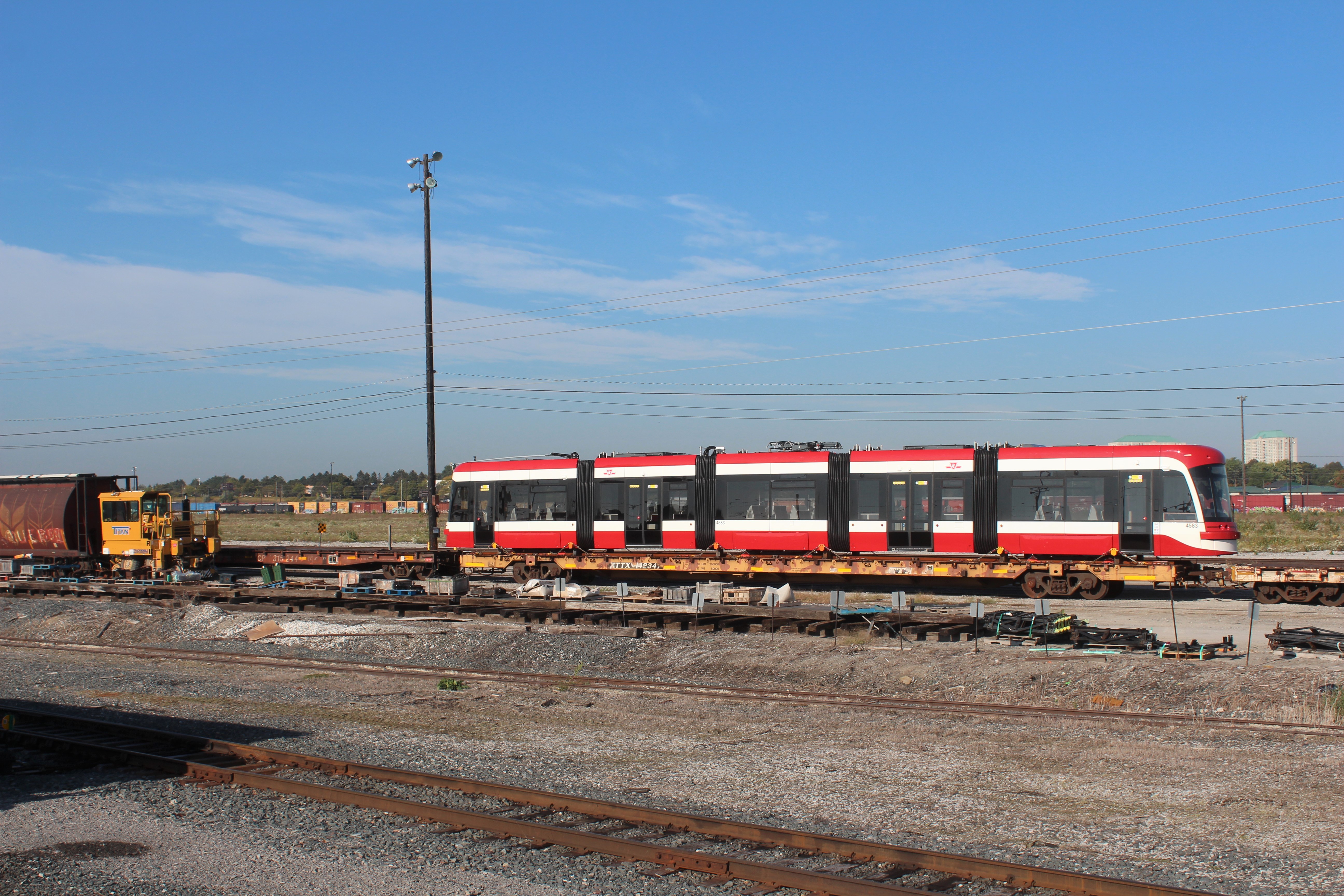Yes, however, I’m advocating even longer in, say, a 15 year timeline or 25-year master plan — the length of 2 new-streetcars (4 Peter Witts!). In this case, bidirectional operations become necessary. TTC would have to install a crossover near the loops. That’s just details, much cheaper than building a subway. Almost as long as a Calgary C-Train.
To clarify context —
My post is not discussing towing operations; I’m talking about powered EMU-style multi-unit operations, similar to Calgary C-Train and Eglinton Crosstown LRT (Which uses almost-identical vehicles, but chained). Has powered consists ever even been tested, specced, or conceptualized?
Obviously the route would have to be modified. The catenary (pantograph) and most of the track is theoretically compatible with powered consist operations, but you might need some modifications:
(1) Extra power due to consist operations at high service frequencies, so adding an additional substation or so;
(2) Crossovers near loops since 60-meter consists would not be compatible
(3) Closure of some side streets (Spadina style) to permit passenger revenue consist-operations
(4) Upgrade of frogs/switches at select intersections
(5) Raised subway-style platforms
(6) No cars for the lanes of the whole King streetcar tracks except at intersections (full transit-only), as a median LRT (like the existing one) outside downtown, and a transit-only corridor inside downtown (upgrade of King Trial to full TOC)
(7) Upgraded transit priority at all intersections for the entire King streetcar route, end-to-end.
(8) Installation of a LRT-like signalling system for safe crossover interlocks (positive train control safety for occupied tracks & occupied intersections).
(9) Possible minor electronics upgrade to the new-streetcars for revenue-passenger EMU-consist operations. They do that already in Flexities (the Freedom version).
(10) Possible modifications to certain curves so that there are no sharp turns for the consist-operated routing. This is not much of a problem for the King routing, though the route to MSF will be a challenge
Nontheless, still cheap compared to a subway.
This has been done before elsewhere in the world, converting a streetcar route into a surface metro — imagine converting an old tram into a long Calgary C-Train. That has happened before.
Yes, “pigs won’t fly” yet, but this will be realistic later because of changing downtown demographics and superdensification of Toronto. This would allow doubling of King passenger capacity relatively cheaply. In 20 years, demographics are going to be flexible enough to allow the upgrade of King streetcar route into a surface metro style route like the Calgary C-Train.
Basically the “Calgary C-Train” style conversion of King TTC to a King Metro. These consists won’t go everywhere on the streetcar network, but would potentially function well along an upgraded route such as the King route, which would be the most obvious candidate to upgrade a streetcar route to metro-league specs.
An opportunity exists to build a surface near-subway-rapid metro line for less than a billion dollars. Including extra vehicles.







